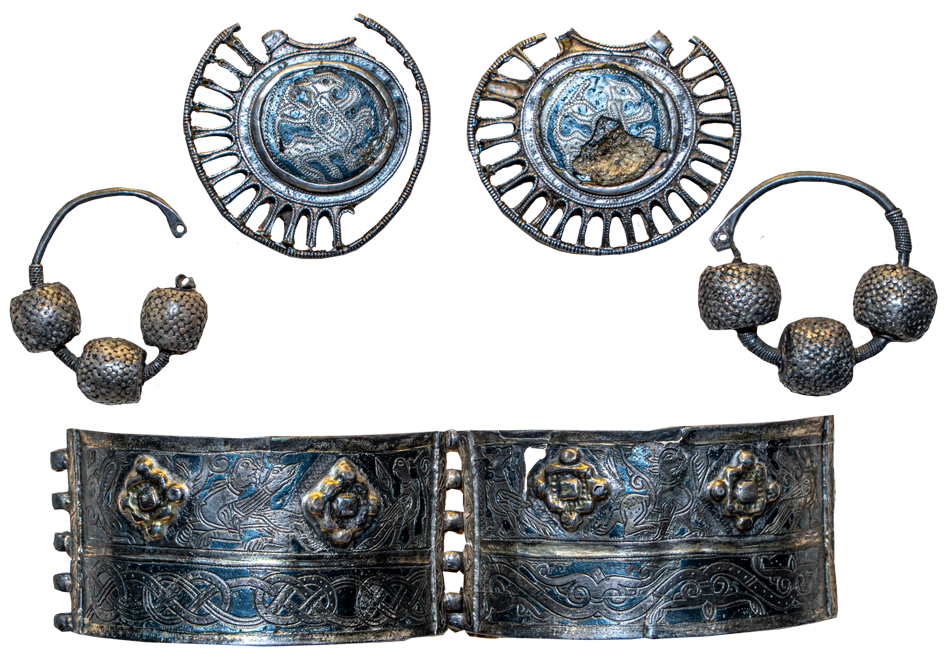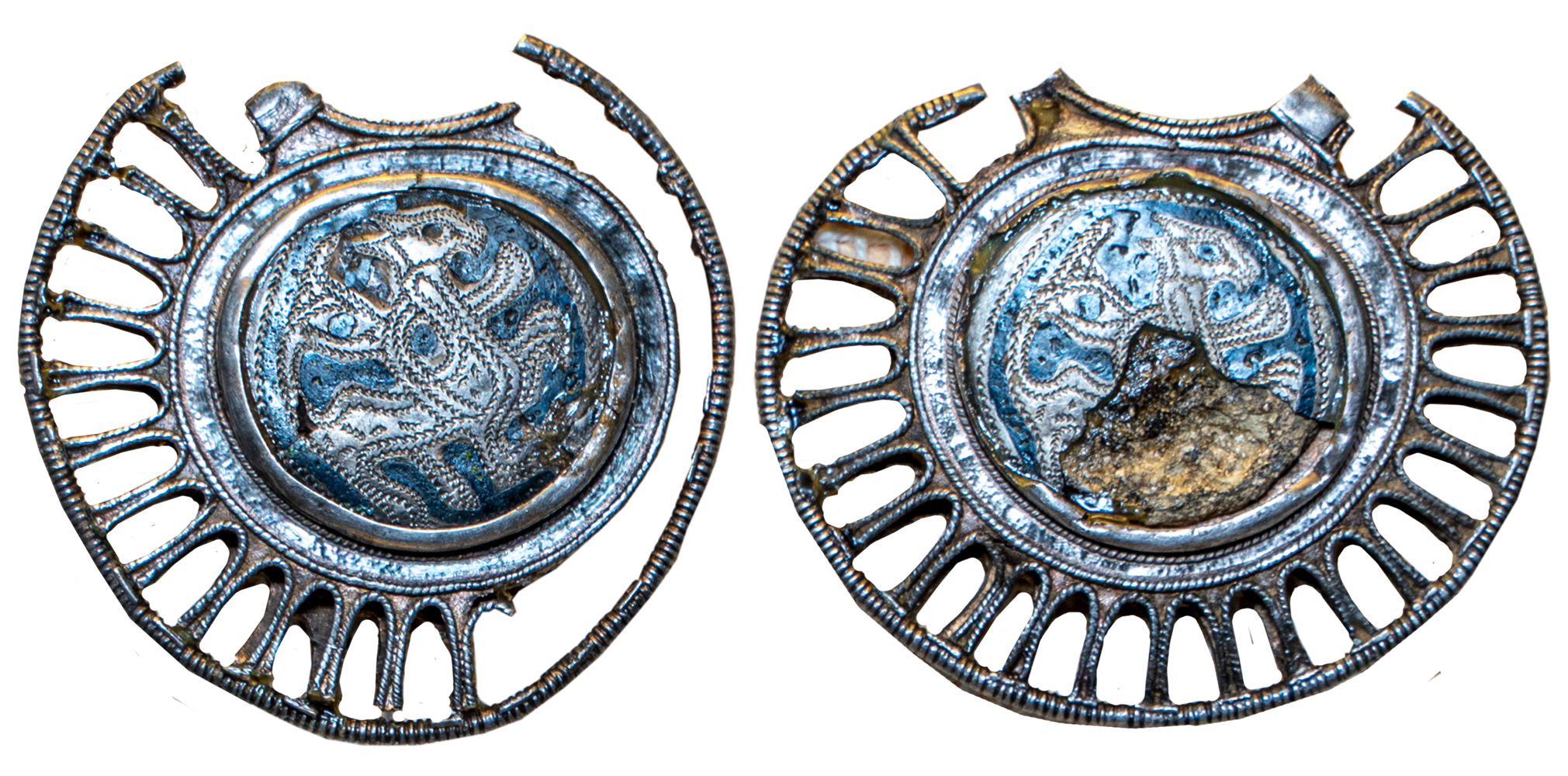Treasure of 1872 from the estate of Prince Trubetskoy



In 1872, in front of the house of Princess Trubetskaya on Bolshaya Vladimirskaya street in Kiev (presently: Vladimirskaya), when digging a hole for a street gas lamp, were found two vessels: one with a handle about 20 cm high, was empty, and the other (larger) contained a Treasure.
In 1895 the treasure along with the entire collection of Prince Trubetskoy was purchased by the Archaeological Commission, and in 1898 the whole lot was transferred to the Historical Museum.
The treasure consists of: 2 kolts (women's headgear) with niello inserts, 4 silver three-bead temple rings (women's headgear) and a silver two-part hinged wristband.
Kolt was an old Russian women's jewel of the XI–XIII centuries, a hollow silver or golden decorated pendant suspended to a headgear. Presumably, a piece of cloth moistened with fragrance would be placed inside it.
A wristband is a wide bracelet that fixed sleeves of clothes.
The temple ring was a bronze, silver or golden women’s adornment usually dangling at the temples. It was worn by one or several pairs at once. There are also cases when they were worn as earrings.
Temple rings are the most characteristic adornments of Slavic women. Each tribe had those of specific forms of their own. Rings were suspended on ribbons or straps to headgear, sometimes pinned through band or a ribbon, or sometimes weaved directly in the hair or passed through earlobe.
Three-bead temple rings are called "temple rings of Kievan type".


